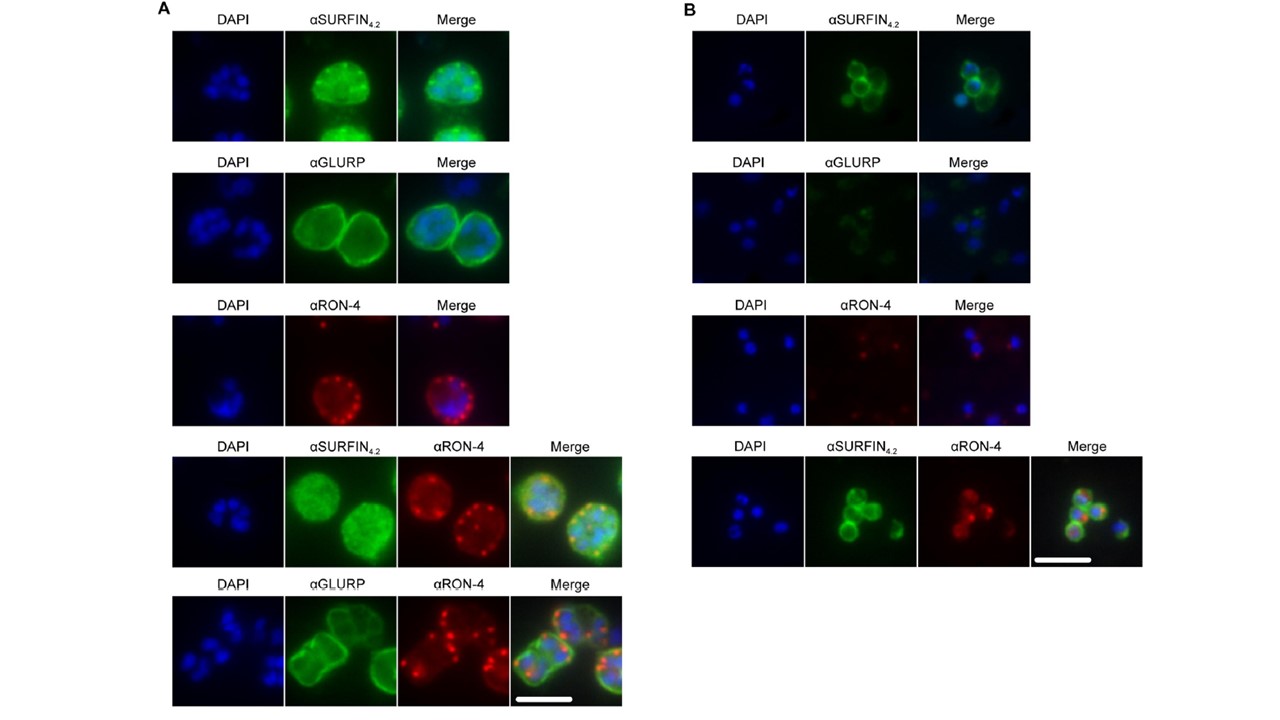SURFIN4.2, GLURP and RON4 localization in schizonts and free merozoites. (A) IFA on single or double-labeled schizonts. (B) IFA on single or doublelabeled free purified merozoites, SURFIN4.2 and GLURP are shown in green. RON4 is shown in red. Scale bar represents 5μm. Single staining with both antibodies however suggested that both SURFIN4.2 and GLURP are associated with the merozoite surface particularly in intact schizonts (A and B, first two panels). Anti RON4 antibodies stained efficiently the merozoite apical end (rhoptries) if used alone (A and B, third panel) but co-staining with SURFIN4.2 did not indicate a clear co-localization, with the apical localization for SURFIN4.2 not being observed when anti-RON4 antibodies were also included (A and B, fourth panel). This could indicate that both proteins are in such close vicinity, that antibodies against one of them (anti-RON4) pose steric hindrance for antigen recognition by the second antibody (anti-SURFIN4.2).
Quintana MDP, Ch'ng JH, Zandian A, Imam M, Hultenby K, Theisen M, Nilsson P, Qundos U, Moll K, Chan S, Wahlgren M. SURGE complex of Plasmodium falciparum in the rhoptry-neck (SURFIN4.2-RON4-GLURP) contributes to merozoite invasion. PLoS One. 2018 Aug 9;13(8):e0201669.
Other associated proteins
| PFID | Formal Annotation |
|---|---|
| PF3D7_1035300 | glutamate-rich protein GLURP |
| PF3D7_1116000 | rhoptry neck protein 4 |
